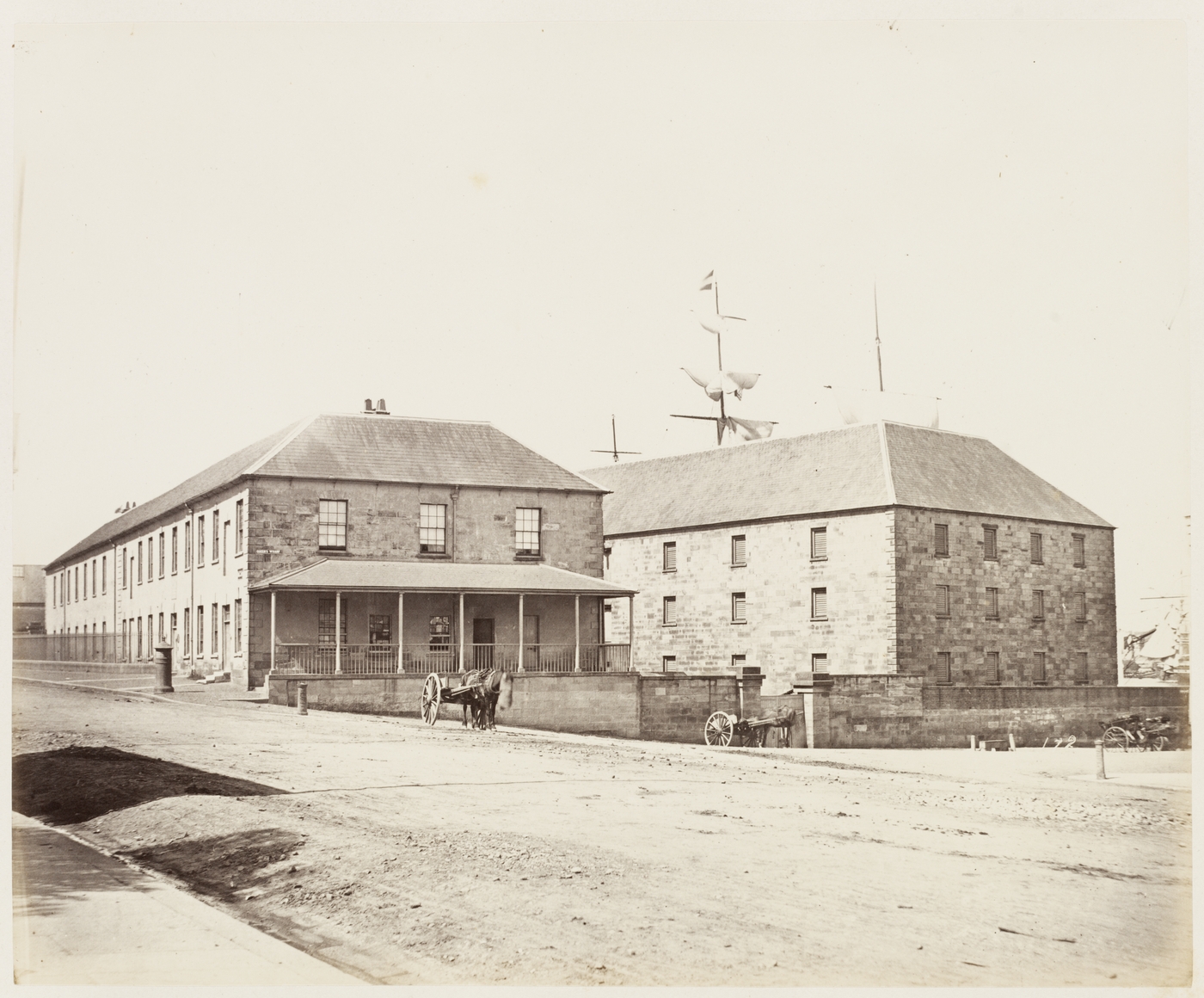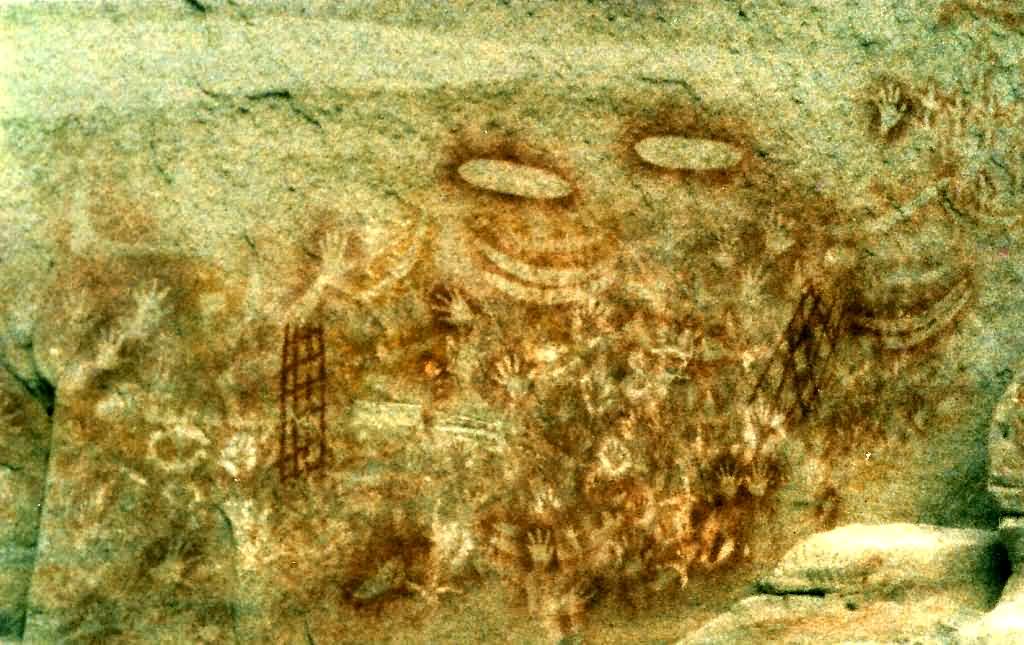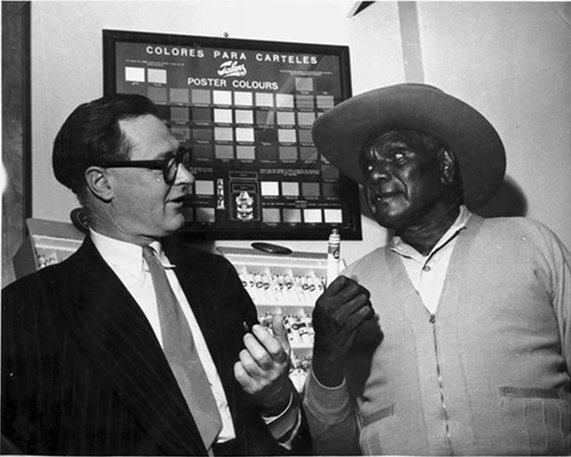|
Turkey Tolson Tjupurrula
Turkey Tolson Tjupurrula (sometimes just Turkey Tolson; – 10 August 2001) was a Pintupi-speaking Indigenous artist from Australia's Western Desert region. Born near Haasts Bluff, Northern Territory, Turkey Tolson was a major figure in the Papunya Tula art movement, and the longest-serving chairman of the company formed to represent its artists. A painter whose creative output spanned nearly three decades, controversy erupted briefly in 1999, when disputed declarations were made by the artist regarding whether some works under his signature had been painted by some female relatives. Creator of the work ''Straightening spears at Ilyingaungau'' (1990), Tolson's paintings are held by several major Australian public galleries, including the Art Gallery of South Australia, National Gallery of Victoria and the National Museum of Australia. Life Son of Toba Tjakamarra, one of the first Pintupi people to come into European settlements out of the Western Desert, Turkey Tolson was b ... [...More Info...] [...Related Items...] OR: [Wikipedia] [Google] [Baidu] |
Kinship System
In anthropology, kinship is the web of social relationships that form an important part of the lives of all humans in all societies, although its exact meanings even within this discipline are often debated. Anthropologist Robin Fox says that the study of kinship is the study of what humans do with these basic facts of life mating, gestation, parenthood, socialization, siblingship etc. Human society is unique, he argues, in that we are "working with the same raw material as exists in the animal world, but ecan conceptualize and categorize it to serve social ends." These social ends include the socialization of children and the formation of basic economic, political and religious groups. Kinship can refer both to the patterns of social relationships themselves, or it can refer to the study of the patterns of social relationships in one or more human cultures (i.e. kinship studies). Over its history, anthropology has developed a number of related concepts and terms in the stu ... [...More Info...] [...Related Items...] OR: [Wikipedia] [Google] [Baidu] |
Art Gallery Of New South Wales
The Art Gallery of New South Wales (AGNSW), founded as the New South Wales Academy of Art in 1872 and known as the National Art Gallery of New South Wales between 1883 and 1958, is located in The Domain, Sydney, Australia. It is the most important public gallery in Sydney and one of the list of largest art museums, largest in Australia. The gallery's first public exhibition opened in 1874. Admission is free to the general exhibition space, which displays Australian art (including Indigenous Australian art), European and Asian art. A dedicated #Asian Art Gallery expansion, Asian Gallery was opened in 2003. History 19th century On 24 April 1871, a public meeting was convened in Sydney to establish an Academy of Art "for the purpose of promoting the fine arts through lectures, art classes and regular exhibitions." Eliezer Levi Montefiore (brother of Jacob Levi Montefiore and nephew of Jacob Barrow Montefiore, Jacob and Joseph Barrow Montefiore) co-founded the New South Wales Aca ... [...More Info...] [...Related Items...] OR: [Wikipedia] [Google] [Baidu] |
Museum Of Contemporary Art, Sydney
The Museum of Contemporary Art Australia (MCA), formerly the Museum of Contemporary Art, Sydney, is located on George Street in The Rocks neighbourhood of Sydney. The museum is housed in the Stripped Classical/Art Deco-styled former Maritime Services Board (MSB) building on the western side of Circular Quay. A modern wing was added in 2012. While the museum as an institution was established in 1991, its roots go back a half-century earlier. Expatriate Australian artist JW Power provided for a museum of contemporary art to be established in Sydney in his 1943 will, bequeathing both money and works from his collection to the University of Sydney, his alma mater. The works, along with others acquired with the money, were exhibited mainly as a travelling collection in the decades afterward, stored in two different university buildings. This collection was known as the Power Gallery of Contemporary Art. When the MSB building became available the Museum of Contemporary Art, Sydne ... [...More Info...] [...Related Items...] OR: [Wikipedia] [Google] [Baidu] |
Dreamtime
The Dreaming, also referred to as Dreamtime, is a term devised by early anthropologists to refer to a religio-cultural worldview attributed to Australian Aboriginal religion and mythology, Australian Aboriginal mythology. It was originally used by Francis James Gillen, Francis Gillen, quickly adopted by his colleague Walter Baldwin Spencer, and thereafter popularised by A. P. Elkin, who later revised his views. The Dreaming is used to represent Aboriginal concepts of "Everywhen", during which the land was inhabited by ancestral figures, often of heroic proportions or with supernatural abilities. The term is based on a rendition of the Arandic languages, Arandic word , used by the Aranda people, Aranda (Arunta, Arrernte) people of Central Australia, although it has been argued that it is based on a misunderstanding or mistranslation. Some scholars suggest that the word's meaning is closer to "Eternity, eternal, uncreated". Anthropologist William Edward Hanley Stanner, William ... [...More Info...] [...Related Items...] OR: [Wikipedia] [Google] [Baidu] |
Johnny Scobie Tjapanangka
Johnny is an English language personal name. It is usually an affectionate diminutive of the masculine given name John, but from the 16th century it has sometimes been a given name in its own right for males and, less commonly, females. Variant forms of Johnny include Johnnie, Johnney, Johhny, Johnni and Johni. The masculine Johnny can be rendered into Scottish Gaelic as . Notable people and characters named Johnny or Johnnie include: People Johnny * Johnny 3 Tears (born 1981/82), American musician * Johnny Adams (1932–1998), American singer * Johnny Aba (born 1956), Papua New Guinean professional boxer * Johnny Abarrientos (born 1970), Filipino professional basketball player * Johnny Abbes García (1924–1967), chief of the government intelligence office of the Dominican Republic * Johnny Abel (1947–1995), Canadian politician * Johnny Abrego (born 1962), former Major League baseball player * Johnny Ace (1929–1954), American rhythm and blues singer * Johnny Adair (born ... [...More Info...] [...Related Items...] OR: [Wikipedia] [Google] [Baidu] |
National Gallery Of Australia
The National Gallery of Australia (NGA), formerly the Australian National Gallery, is the national art museum of Australia as well as one of the largest art museums in Australia, holding more than 166,000 works of art. Located in Canberra in the Australian Capital Territory, it was established in 1967 by the Australian Government as a national public art museum. it is under the directorship of Nick Mitzevich. Establishment Prominent Australian artist Tom Roberts had lobbied various Australian prime ministers, starting with the first, Edmund Barton. Prime Minister Andrew Fisher accepted the idea in 1910, and the following year Parliament established a bipartisan committee of six political leaders—the ''Historic Memorials Committee''. The Committee decided that the government should collect portraits of Australian governors-general, parliamentary leaders and the principal "fathers" of federation to be painted by Australian artists. This led to the establishment of what b ... [...More Info...] [...Related Items...] OR: [Wikipedia] [Google] [Baidu] |
List Of Australian Indigenous Art Movements And Cooperatives
Australian Indigenous art movements and cooperatives have been central to the emergence of Indigenous Australian art. Whereas many western artists pursue formal training and work as individuals, most contemporary Indigenous art is created in community groups and art centres. Indigenous art centres put high value on social inclusion; they support major artists and foster emerging ones; they encourage participation and professional development of young people as artists or related workers, to provide employment and income. They focus on community rather than the art market: family connection, along with activities that celebrate Aboriginal and help to protect culture. The cooperatives or art centres listed below reflect the diversity of art across Indigenous Australia, where art, particularly for remote communities, is a significant source of income and livelihood. Peak groups The following organisations represent, or include, a number of Indigenous art cooperatives: Aboriginal ... [...More Info...] [...Related Items...] OR: [Wikipedia] [Google] [Baidu] |
Geoffrey Bardon
Geoffrey Robert Bardon AM (1940, Sydney – 6 May 2003) was an Australian artist and school teacher who played a "significant" role in the "development of the Western Desert aboriginal art movement". Bardon studied law for three years at the University of Sydney, before changing to study art education at the National Art School in Sydney, graduating in 1965. He taught art at various New South Wales country high schools before taking up a posting in 1971 to teach at the primary school at Papunya, a remote Aboriginal settlement 250 km west of Alice Springs. After encouraging the children to record their sand patterns in paint, he went on to encourage the adult men of the community to paint their Honey Ant Dreaming on the school wall, preserving their traditional Dreamings, or Tjukurpa, and stories in paint. Eric Michaels comments on this in his essay ''Bad Aboriginal Art'': "... irected by Bardon, the eldersbegan to interact with certain issues in 1960s and 70s in ... [...More Info...] [...Related Items...] OR: [Wikipedia] [Google] [Baidu] |
Contemporary Indigenous Australian Art
Contemporary Indigenous Australian art is the modern art work produced by Indigenous Australians, that is, Aboriginal Australians and Torres Strait Islander people. It is generally regarded as beginning in 1971 with a painting movement that started at Papunya, northwest of Alice Springs, Northern Territory, involving Aboriginal artists such as Clifford Possum Tjapaltjarri and Kaapa Tjampitjinpa, and facilitated by white Australian teacher and art worker Geoffrey Bardon. The movement spawned widespread interest across rural and remote Aboriginal Australia in creating art, while contemporary Indigenous art of a different nature also emerged in urban centres; together they have become central to Australian art. Indigenous art centres have fostered the emergence of the contemporary art movement, and as of 2010 were estimated to represent over 5000 artists, mostly in Australia's north and west. Contemporary Indigenous artists have won many of Australia's most prominent art prizes. ... [...More Info...] [...Related Items...] OR: [Wikipedia] [Google] [Baidu] |
Kidney Dialysis
Kidney dialysis is the process of removing excess water, solutes, and toxins from the blood in people whose kidneys can no longer perform these functions naturally. Along with kidney transplantation, it is a type of renal replacement therapy. Dialysis may need to be initiated when there is a sudden rapid loss of kidney function, known as acute kidney injury (previously called acute renal failure), or when a gradual decline in kidney function, chronic kidney failure, reaches stage 5. Stage 5 chronic renal failure is reached when the glomerular filtration rate is less than 15% of the normal, creatinine clearance is less than 10 mL per minute, and uremia is present. Dialysis is used as a temporary measure in either acute kidney injury or in those awaiting kidney transplant and as a permanent measure in those for whom a transplant is not Indication (medicine), indicated or not possible.Pendse S, Singh A, Zawada E. "Initiation of Dialysis". In: ''Handbook of Dialysis''. 4th ed. ... [...More Info...] [...Related Items...] OR: [Wikipedia] [Google] [Baidu] |
Kintore, Northern Territory
Kintore (Pintupi: ''Walungurru'') is a remote settlement in the Kintore Range of the Northern Territory of Australia about west of Alice Springs and from the border with Western Australia. It is also known as Walungurru, Walangkura, and Walangura. History The Kintore Range was named by William Tietkens during his expedition of 1889 after the Governor of South Australia, Algernon Keith-Falconer, 9th Earl of Kintore. In 1979 and 1980 satisfactory water was found in four bores sunk at and near the Kintore Range. In mid-1981 an outstation (homeland) was established there and developed as a resource centre for camps elsewhere in the region, allowing the reoccupation of at least some of the Pintupi country. The community was founded in 1981, when many Pintupi people who lived in the community of Papunya (about from Alice Springs) became unhappy with their circumstances in what they saw as foreign country, and decided to move back to their own country, from which they had been fo ... [...More Info...] [...Related Items...] OR: [Wikipedia] [Google] [Baidu] |





